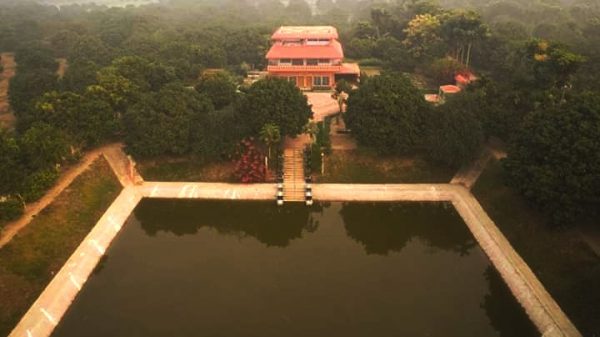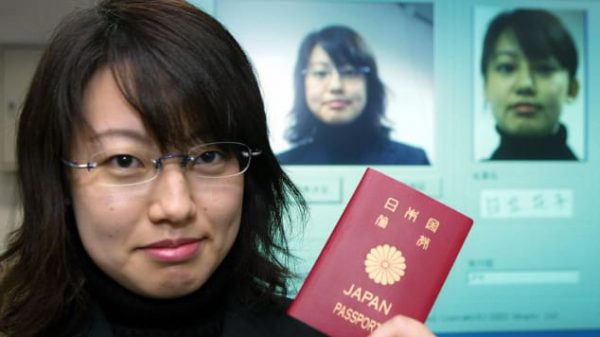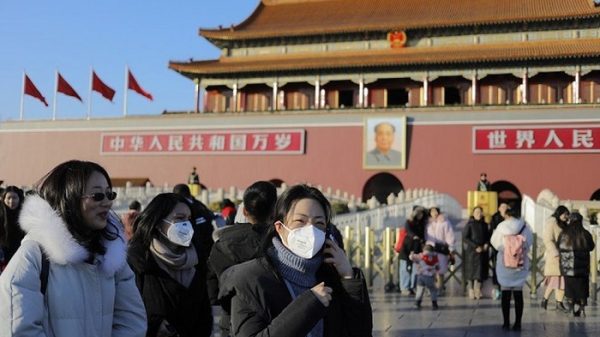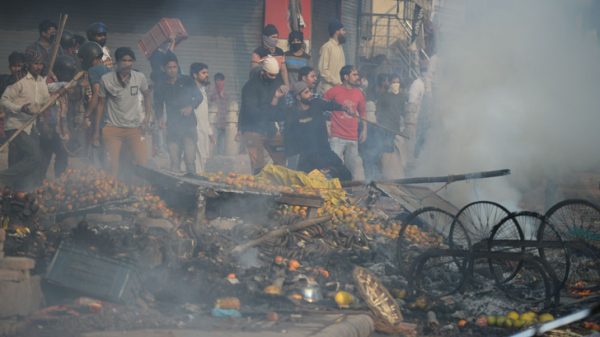BOAT ADRIFT: AL’s journey through power and paradox – III

HASINA’S return to power in 2008 was not just the return of a leader; it was the return of something darker, more insidious. As the caretaker government retreated quietly, she swiftly reasserted control over every arm of the state, her will bending institutions like pliable clay. The dream of democracy, nurtured with such care in the days following the Liberation War, was smothered under the weight of centralized power. Bangladesh had come full circle, from the light of liberation to the darkness of authoritarian rule.
Her rivalry with Khaleda Zia and the BNP was not just a contest of politics; it became a war of attrition, a battle for survival. What began as a clash of ideologies morphed into a campaign of persecution, one designed to systematically dismantle the opposition. Hasina’s regime, with its vast resources and external backing, transformed the political landscape into a battlefield where only one side could emerge victorious. The fractured nation, already torn by years of strife, found itself on the precipice of even greater division. Where once there was hope for reconciliation, there was now only a singular vision of control.
Under Hasina’s rule, the landscape of progress was undeniable. New flyovers pierced the sky, highways stretched across the country and power plants hummed with the promise of a brighter future. Yet this progress came at a price — the obliteration of the democratic ideals that had once defined the nation. The air of democratic promise thickened into the suffocating smog of authoritarianism. Elections became nothing more than theatre, performances that masked the underlying truth: dissent had no place in the new Bangladesh. Hasina’s grip tightened with every passing day and the people, once the lifeblood of democracy, found their voices silenced.
Democratic ideals to power consolidation
HASINA’S leadership, once seen as a hopeful return to democracy, began to reveal its true nature as a pragmatic shift toward unrelenting power consolidation. The days of coalition-building, once a cornerstone of her earlier tenure, gave way to a more singular pursuit of control. The cracks in the democratic facade deepened, exposing a political system where compromise had no room to breathe, where only the most rigid vision could thrive.
India, with its strategic interests, loomed large in Hasina’s administration. The alliance, far from subtle, became a defining feature of her governance. Bangladesh’s sovereignty, hard-won in the blood of its people, gradually eroded beneath the weight of Hasina’s reliance on India. Water-sharing agreements, border skirmishes and trade imbalances laid bare the asymmetry of this relationship. Hasina’s repeated invocation of ‘eternal gratitude to India for 1971’ became a mantra, a refrain that reverberated through the halls of power, undermining the very notion of national independence. The term ‘Awami Bharatiya League’ became a bitter joke, a reminder of how sovereignty, like a delicate flower, could wither under the oppressive heat of political dependence.
Shahbagh and Shapla Square
IN THE pursuit of secularism, Hasina sought to erase Islam from the public sphere. The Shahbagh movement, a creation of the state, presented itself as a righteous campaign to rid Bangladesh of its Islamic roots. The aim was to promote Bengali nationalism, but in reality, it was an attempt to reshape the country’s identity, to cleanse it of what had long been an intrinsic part of its soul. The state-sponsored narrative pitted secularism against faith, portraying Jamaat-e-Islami as the enemy of progress, the enemy of a modern Bangladesh.
But the grassroots response, embodied in the Shapla movement, was a resounding rejection of this vision. Shapla was not just a movement; it was the defiant roar of a people unwilling to let go of their faith, unwilling to be told that their identity was something to be discarded. While Shahbagh’s successes led to the execution of several Jamaat leaders, the broader ideological struggle floundered. The Bengali soul, with its deep ties to Islam, would not be so easily erased. The rhetoric of 1971, once a unifying call, had lost its potency. The nation’s identity, fractured and complex, refused to be defined by the narrow vision of the state.
Rise of constitution-based fascism
BY 2014, Hasina’s regime had entered its most repressive phase. The BNP, once a formidable force, was broken, its leadership either imprisoned, exiled, or silenced. State institutions, once designed to serve the people, became instruments of her will, from the judiciary to the media, from civil society to the police. The War on Terror narrative provided a convenient pretext for cracking down on perceived enemies and the government turned its gaze inward, targeting Islamic ideologies with a ferocity that bordered on the pathological.
The massacre of madrasah students in 2013 stands as a chilling testament to the regime’s brutal methods. Denied, whitewashed and ultimately forgotten, the atrocity exposed the lengths to which the state was willing to go to maintain control. The language of ‘militant’ and ‘razakar’ became shorthand for political opponents, isolating them from the national narrative. Bangladesh’s once vibrant Islamic identity was redefined, reshaped and regulated — its very essence manipulated in the name of secularism.
Economic mirage
HASINA’S regime proudly paraded its economic achievements — boasting of GDP growth, megaprojects and shiny new infrastructure that dotted the country. But beneath this glossy veneer, the true reality was far murkier. Corruption festered in the shadows, inequality grew like a festering wound and critical sectors such as education and healthcare were neglected, left to decay. The political elite, riding the wave of infrastructural progress, flourished, while the people who had once dreamed of a new Bangladesh found themselves disillusioned, their hopes dashed against the harsh realities of a state that no longer served them.
External interests, too, played a crucial role in shaping the nation’s destiny. Judicial manipulation and bureaucratic servitude to foreign agendas became commonplace, eroding the sovereignty that had been so fiercely defended during the Liberation War. Hasina’s Bangladesh, far from being the independent nation that its founders had envisioned, became a pawn in a larger geopolitical game, its people once again caught between competing powers.
Legacy of betrayal
IN THE waning years of her reign, Sheikh Hasina’s greatest betrayal lies not in any singular event, but in the gradual erosion of the democratic principles upon which Bangladesh was founded. Her leadership, characterised by impressive infrastructural and economic achievements, has come at a heavy price — one paid in the currency of democracy, justice and the right of the people to participate meaningfully in their own governance. What began as a movement for liberation, founded on ideals of equality and self-determination, has devolved into a machinery of control, monopolizing power and silencing dissent. The villages that once resonated with songs of freedom now endure in silence, as their cries are drowned out by the state’s heavy-handed tactics. The towns that once rose to challenge oppression now cower beneath the weight of authoritarian rule. This is the legacy of Hasina: a leader who traded the promise of democracy for the lure of power, the ideal of justice for the expediency of control. A betrayal that is not easily undone.
Unravelling: 2024
FOR 15 years, Bangladesh has endured a regime that wielded power with a brutality reminiscent of the worst forms of authoritarianism. Sheikh Hasina’s government, with its incessant claims of progress, presided over a democracy that gasped for air, its life slowly drained by systemic corruption, human rights violations and an entrenched political elite. Once, between 1991 and 2006, Bangladesh stood as a beacon of democratic promise in South Asia — its elections marked by genuine competition and its people invested in the idea that their voices mattered. Those days now feel like a distant memory, obscured by the storm clouds of repression and manipulation.
The slide towards authoritarianism did not occur in a vacuum. It must be understood in the broader context of geopolitics, where the post-9/11 world was shaped by a stark binary: with us or against us, friend or foe. The United States, along with India, constructed a new order where strategic alliances took precedence over human rights and democracy. New Delhi, ever the opportunist, cultivated Hasina as its reliable ally in Dhaka. For Bangladesh, once a nation of promise, it was now reduced to a pawn in the regional game of dominance. The West, content to look the other way, tacitly supported this arrangement, turning a blind eye to the systemic violence and repression that characterised Hasina’s rule. When the public rage finally erupted in 2024, spilling into the streets in waves of grief and anger, the regime’s response was predictably brutal — force, repression and violence.
Martyrdom of Abu Sayeed
AMID the uprising, one name rose above the others: Abu Sayeed, a symbol of defiance in a world ruled by violence. Unarmed, he stood in the face of bullets that tore into his flesh but failed to break his spirit. Shot once, he rose. Shot twice, he stood. His death on the blood-soaked soil of Rangpur became a symbol of resistance, a reminder that, in the end, it is often courage, not power, that defines the course of history. Abu Sayeed’s name now lives in the lexicon of rebellion, an enduring testament to the idea that even in the darkest moments, the human spirit can defy the forces of tyranny.
However, revolutions are rarely singular acts. They have a ripple effect that can unsettle even the most entrenched power structures. If Hasina’s regime were to collapse, it would be a geopolitical catastrophe for India — revealing decades of manipulation and vested interest. Bangladesh, for India, has been more than just a neighbouring state; it has been a strategic asset. Yet, history has a way of turning against those who seek to impose their will through manipulation and hegemony.
Decline of Awami League
BY 2024, the Awami League, once the harbinger of liberation and hope, had degenerated into a hollow shell of its former self. Corrupted, internally fractured and increasingly disconnected from the people it once represented, the party was gasping for survival. The cracks in the façade were visible everywhere — dissenting voices silenced, student movements crushed, the youth alienated by the entrenched elites. Economic growth, once paraded as a symbol of the regime’s success, was exposed as little more than a façade, masking deep inequalities. Mega projects, serving the interests of the political elite, had little impact on the lives of ordinary Bangladeshis. The Awami League’s political alliance with India, once considered vital for survival, was now a source of increasing disillusionment. The people, who once cheered Hasina’s party as champions of national sovereignty, now saw in her gestures of subservience to New Delhi a betrayal too egregious to ignore. Sovereignty had become a hollow slogan, mouthed in rallies but absent in policy.
The judiciary had been tamed, the media muzzled and elections became a scripted performance where the outcome was never in doubt. The ideals of Sheikh Mujibur Rahman had become a mere tool for political legitimacy in Hasina’s hands. Mujib’s early vision of democracy had been sacrificed at the altar of power consolidation.
Myth of Sheikh Mujibur Rahman
BY 2024, the myth of Sheikh Mujibur Rahman had begun to fray, unravelling thread by thread under the weight of its contradictions. Once venerated as the father of the nation — a man who had carved a country out of oppression and hope — Mujib’s legacy had become a tool in a different kind of oppression. His image, ubiquitous and unyielding, loomed over every street corner, every schoolroom, every state building. But the ideals he once championed — justice, equality, freedom — had been buried, not by the tides of time but by the heavy-handedness of his own progeny.
Sheikh Hasina, his daughter, had turned her father’s memory into a fortress for her authority, a gilded cage for the nation’s spirit. Mujib’s name had become less a rallying cry for democracy and more a banner under which dissent was silenced and power was consolidated. The man who once fought to free a people had been reduced to a symbol of control, a figurehead used to maintain the very systems he once sought to dismantle.
For the younger generations, raised on state-sanctioned history that painted Mujib as the greatest Bengali in a thousand years, the dissonance was impossible to ignore. They dug deeper, peeling back layers of hyperbole and what they found unsettled them. The man lionized as a hero of liberation was also revealed as a leader whose decisions carried the heavy scent of opportunism, whose rule bore the marks of despotism.
The irony was unbearable. The monuments, the statues, the slogans — they all spoke of Mujib the visionary, Mujib the saviour. But the reality was more complicated and in that complexity lay the seeds of disillusionment. For the young, the myth was no longer enough. They saw the cracks, the shadows cast by the bright lights of state propaganda and they began to ask uncomfortable questions. Was Mujib the architect of their liberation, or was he also complicit in the creation of a system that had chained them anew?
History, they were beginning to understand, is never as simple as the marble busts and parade grounds would have them believe. And in the myth of Mujib, they saw not just a man, but the story of a nation struggling to reconcile its ideals with its reality. It was not just the unmasking of a leader; it was the unravelling of a narrative, the slow collapse of a mythology that had been wielded like a weapon.
In the silence between Hasina’s speeches, where her father’s name was invoked like a spell, the people began to hear something else. Not the echoes of Mujib’s promises, but the murmurs of their own discontent. And in those murmurs lay the beginnings of a question, one that threatened to break the spell entirely: Who does this myth serve, and at what cost?
Authoritarian turn
IN HER pursuit of power, Sheikh Hasina mistook control for leadership. Her intolerance for dissent, her personal vendettas against those who challenged her authority, reflected not a stateswoman’s wisdom but the fragile ego of a leader whose position had become synonymous with her identity. Figures like Tajuddin Ahmed, General Osmani and Ziaur Rahman, men who had played crucial roles in the liberation struggle, were marginalised, erased from the narrative of the nation’s founding. The authoritarian turn was not just political; it was deeply personal, as Hasina’s thirst for power eclipsed the ideals of democracy and freedom for which so many had fought. Her rhetoric, filled with insults and threats, further exposed the hollowness of her rule.
AL: betrayal and consolidation
ONCE a symbol of hope for Bangladesh, the Awami League has transformed into a glaring example of what happens when power goes unchecked. What started as a movement for liberation, fuelled by ideals of justice, equity and freedom, has descended into a political dynasty consumed by corruption and the thirst for control. Those who once fought for the nation’s liberation have now become the very oppressors they once resisted.
Under Sheikh Hasina’s rule, the Awami League solidified its hold on power, distorting the legacy of the Liberation War to justify an increasingly authoritarian regime. The promises of freedom and justice have become hollow, as the gap between the ruling elite and the people has grown wider with each passing year. The boat, once propelled by the visions of Suhrawardy and the revolutionary spirit of Bhasani, was left stranded by Sheikh Mujib’s autocratic tendencies. Hasina, his daughter, drove the wreck into deeper chaos, sinking the ship with no hope of recovery. The wreckage, once a beacon of progress, now lies abandoned, its value entirely lost.
Betrayal and resilience of Bangladesh
IN THE final reckoning, the story of the Awami League is not one of political triumph — it is a story of betrayal. A betrayal of the ideals that once lit the hearts of the Bangladeshi people. A betrayal of the promises of freedom, justice and dignity. Sheikh Hasina may have built her legacy in the cold, impersonal concrete of flyovers and manipulated elections, but these symbols will fade into the past. History will not remember the architects of empires built on the backs of the people; it will remember the people themselves — those who endured, resisted and fought for the promise of a better future.
Bangladesh, at its core, is not Sheikh Hasina. It is not the hollow promises of her regime. It is the cries of the people who dared to dream. It is the countless voices silenced by violence and repression. It is the youth who took to the streets, defying a future dictated by fear. It is the blood of martyrs like Abu Sayeed, whose sacrifices cannot be erased by the corrupt grasp of power. The Awami League, once the herald of liberation, now stands as a cautionary tale — its once noble cause twisted into a machine for the perpetuation of power, its legacy marked by broken dreams and the violence of betrayal.
But Bangladesh is not defined by its leaders’ brutality. It is defined by its people — those whose spirits remain unbroken, whose resolve remains unyielding. The people who built this nation with their blood will tear down the walls of betrayal and reclaim their future. They will rise again, not because they have forgotten the past, but because they refuse to let it bind them. The Awami League stands at a crossroads, but the real power rests with the people. They hold the pen and they will rewrite their own history. Their legacy is the only one that matters.
Sheikh Hasina may control the apparatus of the state, but the people hold the power of history. The real battle is not in the halls of government — it’s a battle for memory, for reclaiming the truth that has been buried beneath the weight of authoritarianism. As long as the spirit of 1971 lives in the hearts of the Bangladeshi people, no regime, no matter how ruthless, can extinguish it.
Bangladesh will endure, as it always has. It is not in the hands of any single leader, but in the hearts of the people whose struggle for justice will never be quenched. The question is not whether Sheikh Hasina will be remembered — it’s how the people will choose to remember her. And history, as it always does, will be written by those who resist.
The Awami League must confront the truth: it has betrayed its people. And the people, as they have always done, will rise to reclaim what is rightfully theirs — a future free from oppression, free from lies and free from the tyranny of those who have forgotten the ideals they once fought for. This is not the end. It is the beginning. A beginning of reclamation. A revolution—not of the state, but of the soul of Bangladesh.
Concluded.
Abdul Monaiem Kudrot Ullah is a retired captain of the Bangladesh navy.























Leave a Reply